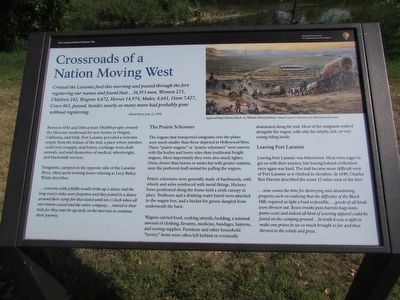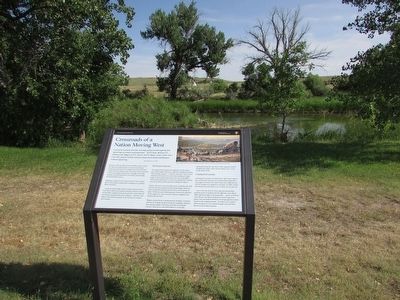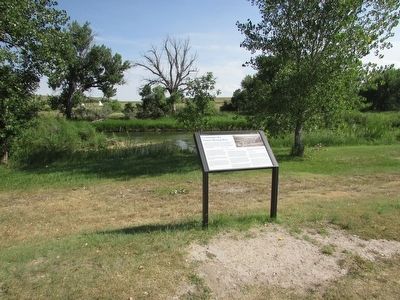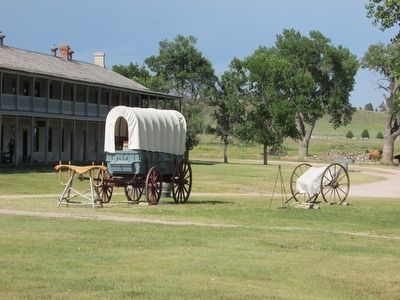Fort Laramie in Goshen County, Wyoming — The American West (Mountains)
Crossroads of a Nation Moving West
Fort Laramie National Historic Site
Crossed the Laramie ford this morning and passed through the fort registering our names and found that . . . 16,913 men, Women 235, Children 242, Wagons 4,672, Horses 14,974, Mules, 4,641, Oxen 7,427, Cows 465, passed, besides nearly as many more had probably gone without registering.
Between 1841 and 1866 at least 350,000 people crossed the Missouri westbound for new homes in Oregon, California, and Utah. Fort Laramie provided a welcome respite from the tedium of the trail, a place where travelers could rest, resupply, mail letters, exchange worn draft animals, and avail themselves of medical, wheelwright, and blacksmith services.
Emigrants, camped on the opposite side of the Laramie River, often spent evening hours relaxing as Lucy Bailey White describes:
. . . someone with a fiddle would strike up a dance and the long weary miles were forgotten and they joined in a dance around their camp fire that lasted until ten o’clock when all merriment ceased and the entire company . . . retired to their beds for they must be up early on the morrow to continue their journey.
The Prairie Schooner
The wagons that transported emigrants over the plains were much smaller than those depicted in Hollywood films. These “prairie wagons” or “prairie schooners” were narrow with flat bodies and lower sides than traditional freight wagons. Most importantly they were also much lighter. Oxen, slower than horses or mules but with greater stamina, were the preferred draft animal for pulling the wagons.
Prairie schooners were generally made of hardwoods, with wheels and axles reinforced with metal fittings. Hickory bows positioned along the frame held a cloth canopy in place. Toolboxes and a drinking-water barrel were attached to the wagon box, and a bucket for grease dangled from underneath the back.
Leaving Fort Laramie
Leaving Fort Laramie was bittersweet. Most were eager to get on with their journey, but leaving behind civilization once again was hard. The trail became more difficult west of Fort Laramie as it climbed in elevation. In 1849, Charles Ben Darwin described the scene 12 miles west of the fort:
. . . now comes the time for destroying and abandoning property each on realizing that the difficulty of the Black Hills required as light a load as possible . . . . goods of all kinds were thrown out. Boxes-trunks-pots-barrels-bags-tents-pants-coats and indeed all kind of wearing apparel could be found on the camping ground . . . In truth it was a sight to make one grieve to see so much brought so far and then thrown to the winds and grass.
Erected by National Park Service.
Topics. This historical marker is listed in this topic list: Forts and Castles. A significant historical date for this entry is June 12, 1850.
Location. 42° 12.162′ N, 104° 33.326′ W. Marker is in Fort Laramie, Wyoming, in Goshen County. Marker can be reached from State Highway 160, on the left when traveling west. Marker is located at Fort Laramie National Historic Site. Touch for map. Marker is in this post office area: Fort Laramie WY 82212, United States of America. Touch for directions.
Other nearby markers. At least 8 other markers are within walking distance of this marker. Embassy on the Northern Plains (within shouting distance of this marker); Post Quartermaster’s Area (within shouting distance of this marker); Handcarts – The New Plan (within shouting distance of this marker); Site of Army Bridge (about 300 feet away, measured in a direct line); The Post Bakeries (about 300 feet away); The Queens of Soap Suds Row (about 300 feet away); Guardhouse (about 400 feet away); General Sink (Latrine) (about 400 feet away). Touch for a list and map of all markers in Fort Laramie.
More about this marker. A painting by William Henry Jackson depicting a wagon train “Approaching Chimney Rock” appears at the upper right of the marker.
Also see . . . Fort Laramie National Historic Site. (Submitted on August 10, 2015, by Bill Coughlin of Woodland Park, New Jersey.)
Credits. This page was last revised on June 16, 2016. It was originally submitted on August 10, 2015, by Bill Coughlin of Woodland Park, New Jersey. This page has been viewed 357 times since then and 9 times this year. Photos: 1, 2, 3, 4. submitted on August 10, 2015, by Bill Coughlin of Woodland Park, New Jersey.



